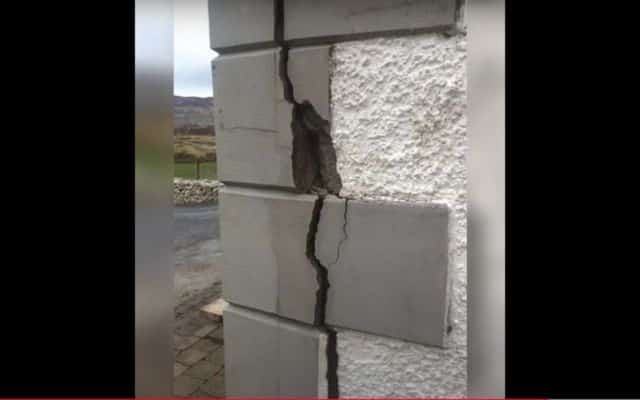Local authorities in ROI are offering homeowners a historic home repairs grant of up to €15k for small scale restoration works on heritage dwellings.
In this article we cover:
- How much you can get from the new grant
- How to check if you qualify
- Types of work eligible
- Deadline to apply
- Inspections and clawback clauses
- How the grant works
- Other sources of funding
In an effort to protect Ireland’s historical buildings, the ROI government is renewing its budget allocations for the Built Heritage Investment Scheme (BHIS).
The scheme provides homeowners of historic properties – which includes thatched structures – with grants of up to €15,000 for small scale, labour intensive repair and restoration projects.
The minimum grant for successful projects is €2,500, and the maximum €15,000. For routine maintenance or minor repair projects, there’s no specific minimum grant amount, but the highest grant you can receive for these types of projects is €2,500.
All grant amounts are inclusive of VAT, and the application process is through local authorities.
According to the Circular issued by the Department of Housing, grant amounts are capped at 50 per cent of the project cost, including funding received from other public agencies including the SEAI, the Heritage Council, LEADER, other government departments and local authorities.
For projects in Architectural Conservation Areas (ACAs), the maximum amount is €10,000 per project. Local authorities will decide how much funding each project receives after an assessment process. They want to see a variety of conservation skills showcased.
A ring-fenced fund of €500k has been allocated to owners of thatched homes to help offset conservation repairs and protect them into the future.
The main goal of the scheme is to help homeowners with repairs and conservation of their historic properties.
To apply and for further information contact your local authority Architectural Conservation Officer or Heritage Officer. Documentation and applicant guidance can also be found on the government website.
The deadline for applications may differ between local authorities, but will be no later than January 26, 2024, so make contact as soon as possible.
Successful applicants will be notified by March 1, 2024.
Eligibility
The grant applies to individual homes that are legally protected under the Planning and Development Acts and listed on the Record of Protected Structures (RPS). Each local authority holds an RPS record.
These protected structures are considered special because of their historical, architectural, artistic, cultural, scientific, social, or technical significance.
The scheme also helps protect important buildings in special areas known as Architectural Conservation Areas (ACAs). These areas are significant for various reasons, such as their architectural, historical, archaeological, artistic, cultural, scientific, social, technical or environmental importance.
When a local authority recognises that improvements to a building are necessary to maintain the special quality of an ACA, they can decide to support such work.
Type of work eligible
As the government body administering the grant, your local authority will assess if the works you propose are eligible.
Work covered by the grant is wide ranging. It also includes professional services.
The grant will cover structural work from the foundations to the roof, including walls, chimneys, roof and all related work from gutters to flashings, doors, windows (including stained glass windows or secondary glazing) and sills and external features (e.g. weathervanes, statues, balconies).
Internal repair and conservation work is also eligible for RPS buildings, but not for ACA structures. This includes works to conserve significant, decorative historic features such as wall and ceiling plasterwork.
Also covered are works to increase thermal performance and energy efficiency, building services (e.g. electricity gas, heating and drainage) and works to repair machinery which is an integral part of a structure (e.g. waterwheels, millstones, early or historic lifts, plumbing mechanisms and heating systems).
The assessment process
Applications will go through an evaluation process and will be assessed based on the following criteria, each carrying equal weight:
- Significance of the structure: Applicants should clarify the importance of the building.
- Efficacy of the works: Applicants must demonstrate how the requested funding offers value for money and effectively addresses risks, preventing further deterioration of the structure and ensuring its future preservation.
- Quality of proposed works: Conservation work should be planned, specified, and supervised by qualified and experienced building conservation professionals. These professionals will be responsible for confirming that the work is carried out to a satisfactory standard.
Inspection and clawback
If the works have been completed as specified in the application, the grant is signed off on and paid.
There is a clawback of the grant if the property is deleted from the RPS, is sold, or the ownership transferred within a period of five years of receiving it.
Other funding available for historic properties
Vacant property grants
In ROI, you can receive €50k to renovate a vacant property or €70k for restoring a derelict one, whether you already own it or are in the process of buying. Your project can also be aimed at renovating for rental purposes; you don’t have to live in it yourself.
The Repair & Leasing scheme provides a loan of up to €40k (or €50k for former bedsits) to refurbish a property you own that has remained uninhabited for at least a year with the goal to prepare it for rental as social housing.
Traditional Farm Buildings Grant
This ROI grant supports farmers in the Green Low-Carbon Agri-Environment Scheme (GLAS) with the conservation and repair of traditional farm buildings and related structures. The maximum grant is €30k, covering up to 75 per cent of the cost, provided it doesn’t exceed the maximum grant amount.
Thatching Grant Schemes
There’s also a thatching grant for ROI owner-occupied houses, covering two-thirds of the approved cost, up to a maximum of €3,810.
Conservation grants
For ROI heritage buildings in need of significant repair, grants are available, but they can be challenging to secure. Contact your local authority for more information. You may also be eligible for tax relief under Section 482.
SEAI grants
Individual grants for various home energy improvements to existing homes in ROI are available:
- Insulation: Grants are available for attic or cavity wall insulation (ranging from €1.5k to €1.7k for detached houses), dry lining (€4.5k), and external wall insulation (€8k).
- Heating systems: Grants are offered for heat pumps (€6.5k), solar panels (up to €2.4k for PV and €1.2k for thermal), and heating controls (€700).
- Energy Rating and assessment: You can get a contribution towards your Building Energy Rating (€50) and a technical assessment (€200) in the context of the work.
Grants are accessible for homes built before 2011 for insulation and heating controls and before 2021 for heat pumps and renewable energy systems.
There are also deep retrofit grants, which include windows, doors and ventilation systems, but these require extensive work. For instance, SEAI provides an example of a detached house where homeowners spent €64.5k on the work with a €24.1k grant, leaving them with €40.4k in expenses.
Plus, there are fully funded energy upgrades available for families receiving government supports like the fuel allowance. You can find more information on these schemes at seai.ie.
NI grants
In NI, Housing Executive grants are available for houses in substantial need of repair, although these can also be quite competitive to obtain. There are very few grants still available for heritage buildings in general; for an overview see the Ulster Architectural Heritage website.











